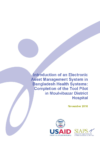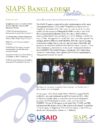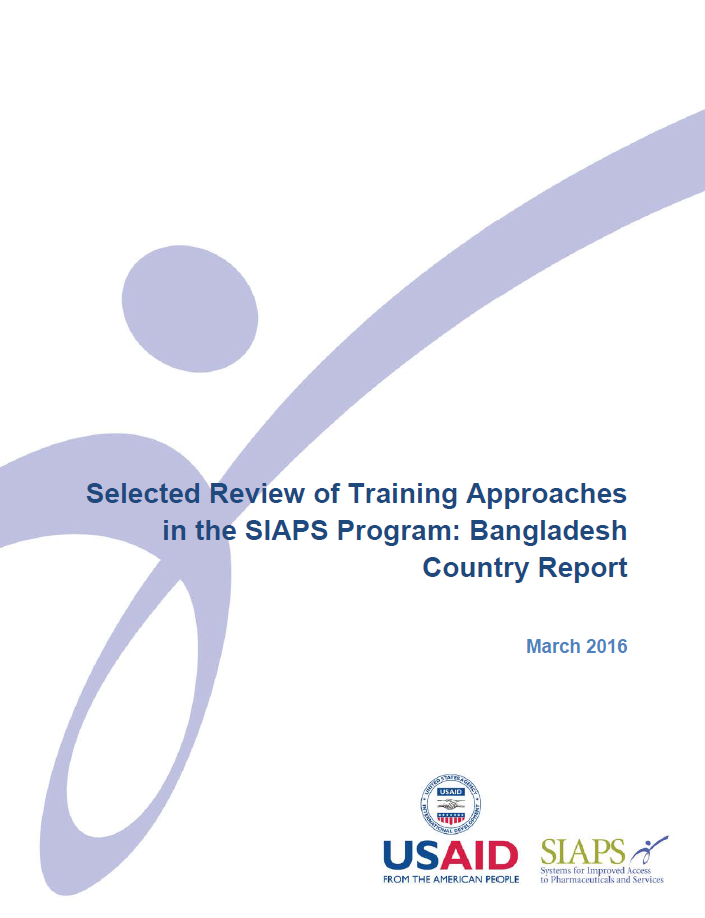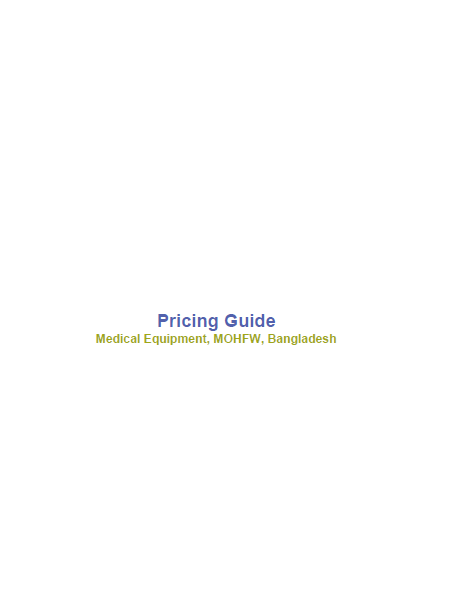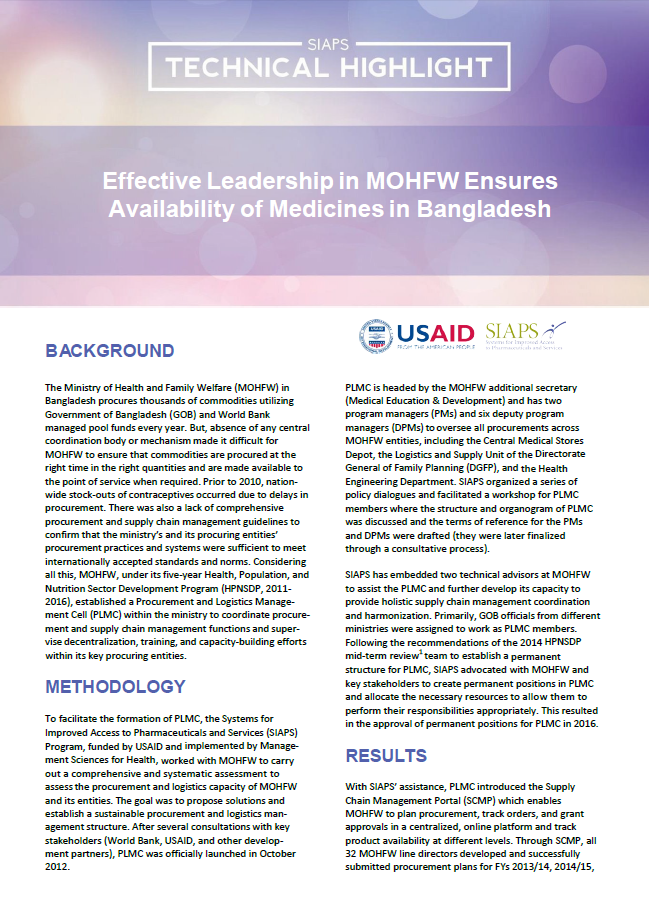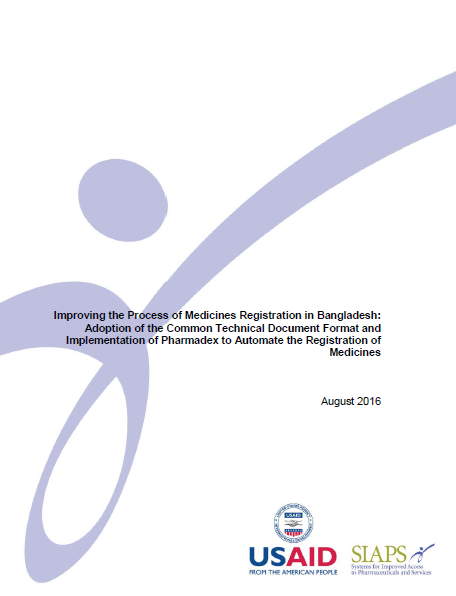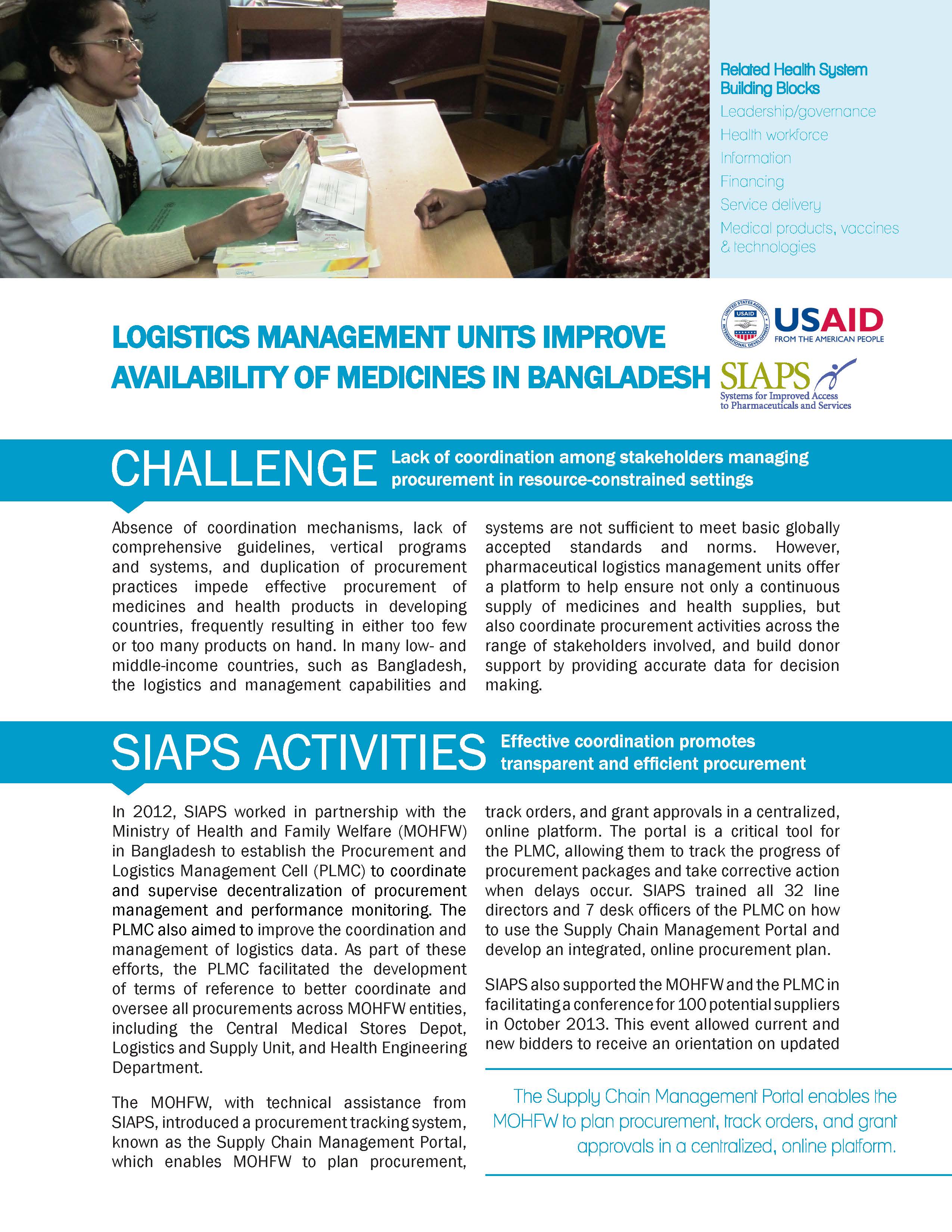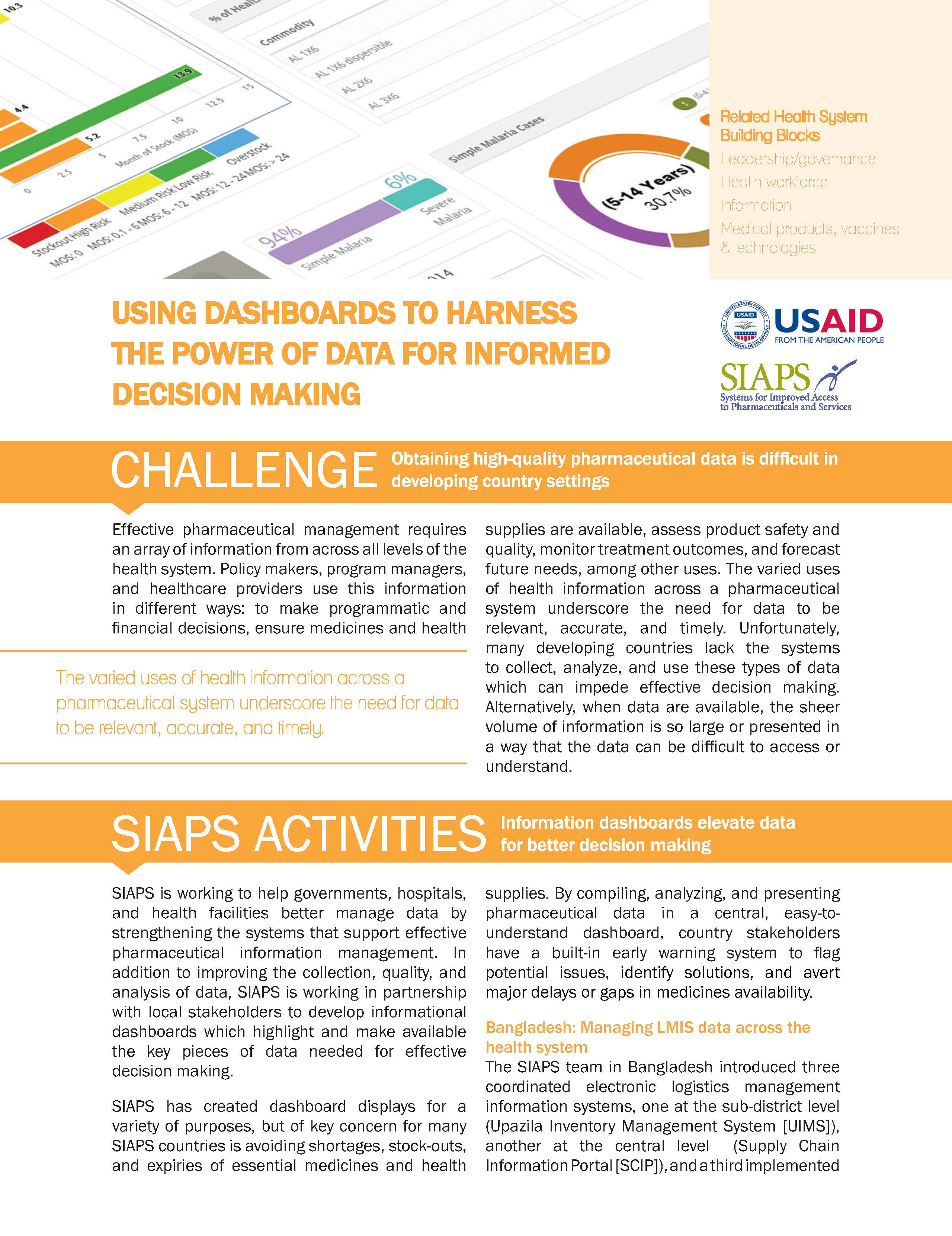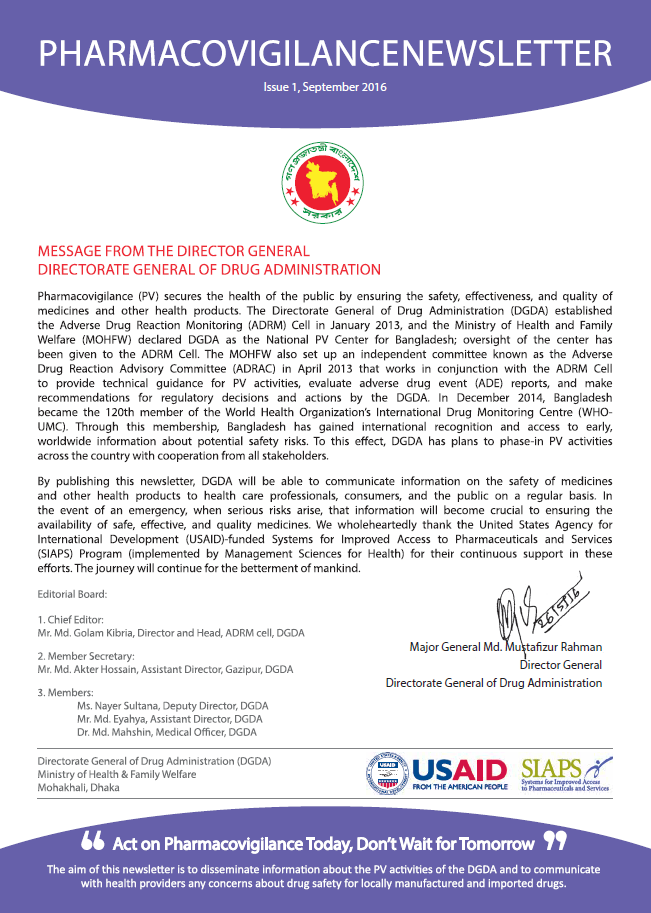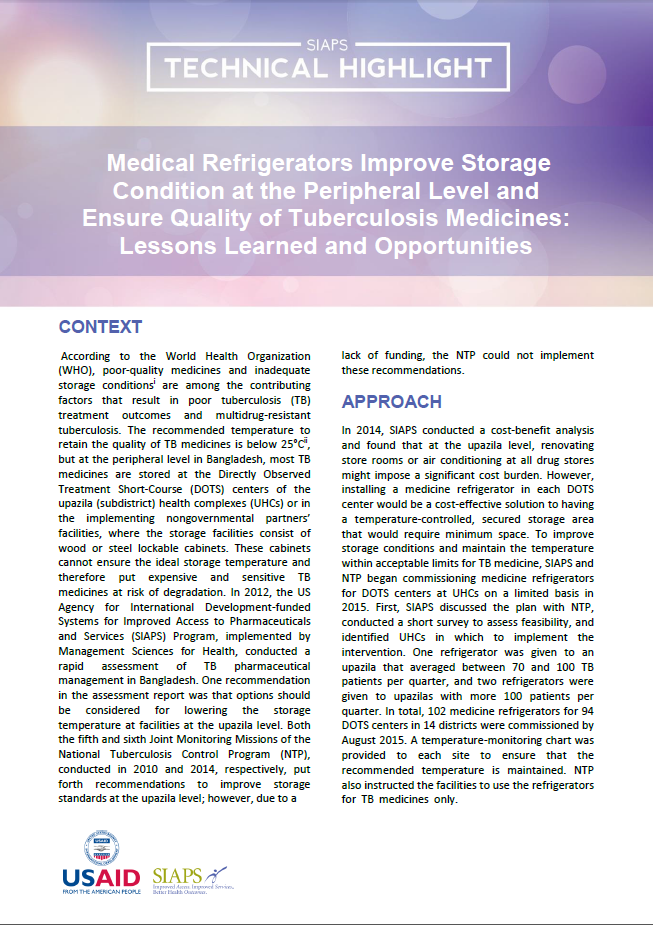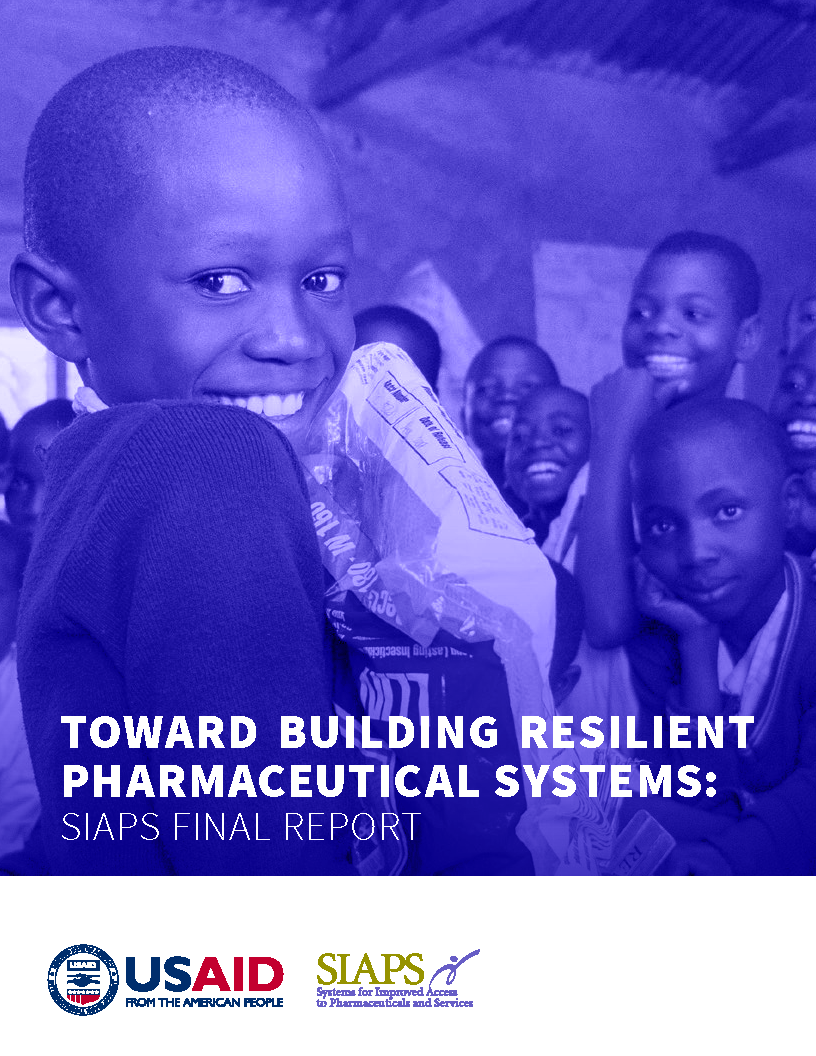In Bangladesh, the government health facilities face a wide variety of health-related challenges and the Ministry of Health and Family Welfare (MOHFW) must have reliable and timely data on the performances of different parts of the health system to plan, implement, and measure health interventions. Even though the MOHFW procures a large number of medical … Read more
Inside this issue: Bangladesh Health and Family Welfare Minister Officially Launches SDP Dashboard Module CMSD’s Warehouse Operations Management Capacity Strengthened Standardization of Medical Equipment Ensures Better Public Health Services DGDA Extends Pharmacovigilance Program NTP Officials’ Warehouse Inventory Management Capacity Enhanced through Training Expansion of DGHS eLMIS to Improve Availability of MNCH Medicines SIAPS Develops Manuals … Read more
Between 2011 and 2015, the SIAPS Program has trained more than 38,000 people in 20 countries. To understand the training approaches used and the results of the training, the SIAPS Program performed a multi-country review of individual capacity-building approaches. The objective of this review is to summarize the types of training that have been used … Read more
Medical equipment items are the most expensive material goods in a health care facility. As part of technical assistance from USAID-supported SIAPS (implemented by MSH) to ensure access to quality products, we have developed a standard table of organization and equipment (TOE) in collaboration with the Ministry of Health and Family Welfare (MOHFW). This TOE … Read more
To facilitate the formation of PLMC, the Systems for Improved Access to Pharmaceuticals and Services (SIAPS) Program, funded by USAID and implemented by Management Sciences for Health, worked with MOHFW to carry out a comprehensive and systematic assessment to assess the procurement and logistics capacity of MOHFW and its entities. The goal was to propose … Read more
SIAPS has been providing technical assistance to DGDA to improve its regulatory function by helping them adopt international standards for medicine registration based on a common format proposed by the International Council for Harmonization for Technical Requirements for Pharmaceuticals for Human Use (ICH), known as the Common Technical Document (CTD). The use of the format … Read more
Absence of coordination mechanisms, lack of comprehensive guidelines, vertical programs and systems, and duplication of procurement practices impede effective procurement of medicines and health products in developing countries, frequently resulting in either too few or too many products on hand. In many low- and middle-income countries, such as Bangladesh, the logistics and management capabilities and systems are not sufficient to meet basic globally accepted standards … Read more
SIAPS is working to help governments, hospitals, and health facilities better manage data by strengthening the systems that support effective pharmaceutical information management. In addition to improving the collection, quality, and analysis of data, SIAPS is working in partnership with local stakeholders to develop informational dashboards which highlight and make available the key pieces of data needed for effective decision making.
By publishing this newsletter, The Directorate General of Drug Administration (DGDA) will be able to communicate information on the safety of medicines and other health products to health care professionals, consumers, and the public on a regular basis. In the event of an emergency, when serious risks arise, that information will become crucial to ensuring … Read more
According to the World Health Organization (WHO), poor-quality medicines and inadequate storage conditions are among the contributing factors that result in poor tuberculosis (TB) treatment outcomes and multidrug-resistant tuberculosis. The recommended temperature to retain the quality of TB medicines is below 25°C, but at the peripheral level in Bangladesh, most TB medicines are stored at … Read more
